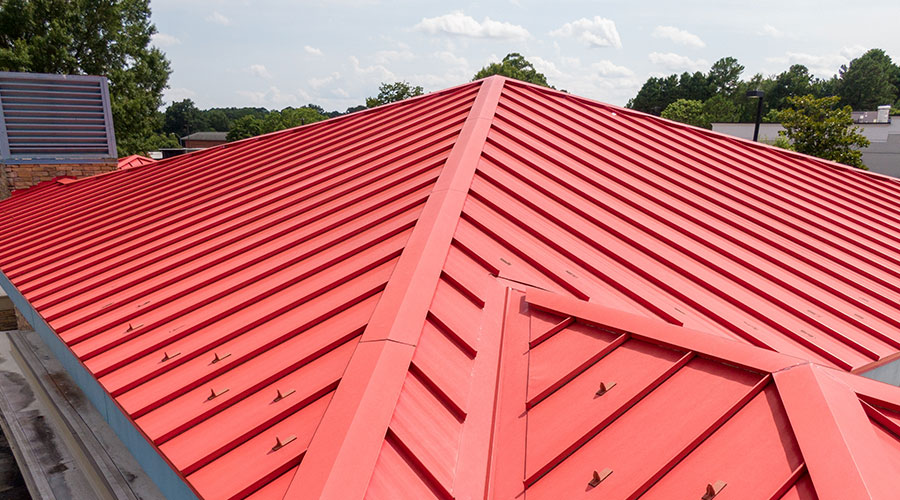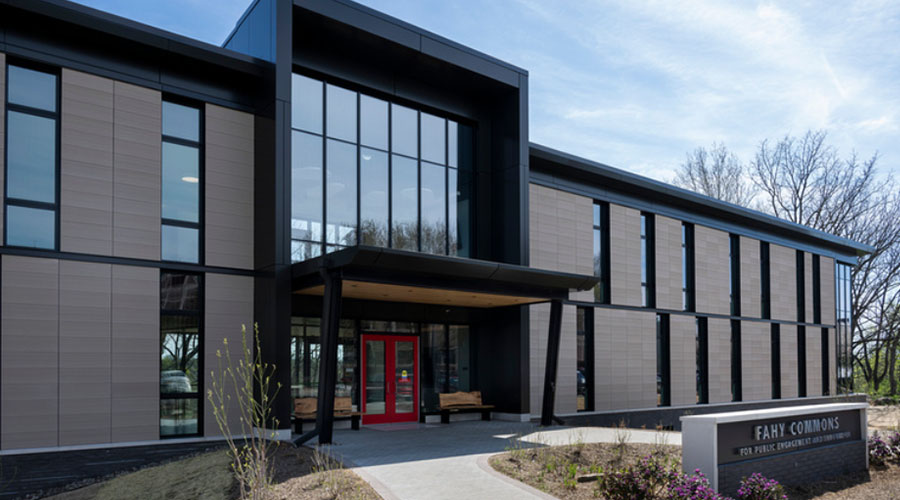Maintenance Strategy Important Part of Sustainable Roofing Plan
Roof insulation important to keep energy costs low in buildings.
By Ronnie Wendt, Contributing Writer
Picking a roof type is important for institutional and commercial facilities, but it’s just one part of the stainability equation.
Without the right insulation in place under the roof, a building will lose energy, says John D’Annunzio, president of Paragon Roofing Technology, a building exterior consulting and testing firm started in 1991. In the winter, this will increase heating costs and, in the summer, air conditioning costs. The R-value of insulation and the emissivity or reflectivity of roofing membranes are dictated by building codes in each region, he explains.
Another key factor is ensuring insulation beneath the roof is dry. D’Annunzio explains insulation loses its structural and thermal capacity when it gets wet. He recommends hiring a professional to analyze the moisture in the roof insulation and remove any wet insulation they find.
“If it’s a big enough issue, they can add more insulation, recover the existing roof or replace it entirely,” he says. “If a roof membrane is in poor condition, it can be more cost effective to replace it versus repairing it. If insulation is saturated, most likely the roof is at a point where you cannot just do maintenance. Often building owners will try to do maintenance over roof systems that have substantially saturated insulation, and those repairs are not long term.”
Roof inspections are another key component of a roofing strategy. D’Annunzio recommends having a professional, such as a consulting or engineering firm or roofing contractor, perform the first inspection.
“This inspection takes the longest and provides proper documentation so that you know what you’re dealing with,” he says. “After that, perform an annual or semi-annual inspection. I recommend looking at the roof before winter begins, so you know that the roof is watertight, and then in the spring, to see if the roof sustained any damage over the winter. It’s also best to do a quick inspection after severe weather to make sure there wasn’t any damage.”
Every inspection should examine the roof membrane, flashings, seams and penetrations where up to 80 percent of all leaks occur, D’Annunzio says. He also recommends making sure roof drains are not blogged or clogged so there’s proper water flow off the roof. If the roof has a coating applied over the membrane, make sure it hasn’t worn out or no re-coating is needed.
Facility managers must promptly inform both the manufacturer and contractor if they detect a leak in a new roof. In addition, it is necessary to inform them about any roof repairs or installation of new equipment to comply with the manufacturer's specifications. This proactive approach is crucial for maintaining the warranty, D’Annunzio says.
“All of this must be documented because if there are problems down the road, you will need to show the manufacturer that you have complied with their specifications,” he adds.
Finally, managers should develop a roofing strategy that budgets for annual repairs, life extension work, and full replacement, says Serena Varner, project manager for FEA, a company that specializes in facility maintenance and repair.
“It’s hard to recommend a specific budget number,” she says. “Generally, I’d recommend setting aside 1 percent to 3 percent of the total installation cost aside annually, so that there is money available for repairs or replacement when needed.”
Having the money available to do work on the roof as needed will extend its life and prevent leaks.
“The goal is to install the most energy efficient roof you can, and then maintain it so that it lasts a long time,” she says.
Ronnie Wendt is a freelance writer based in Minocqua, Wisconsin.
Related Topics:












